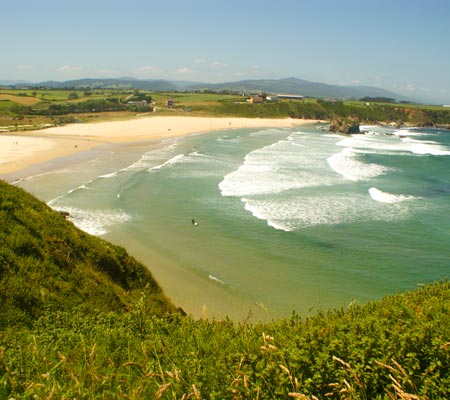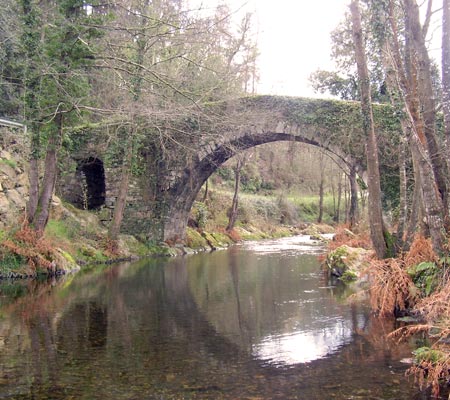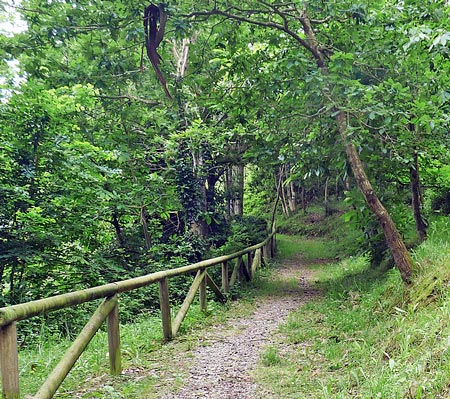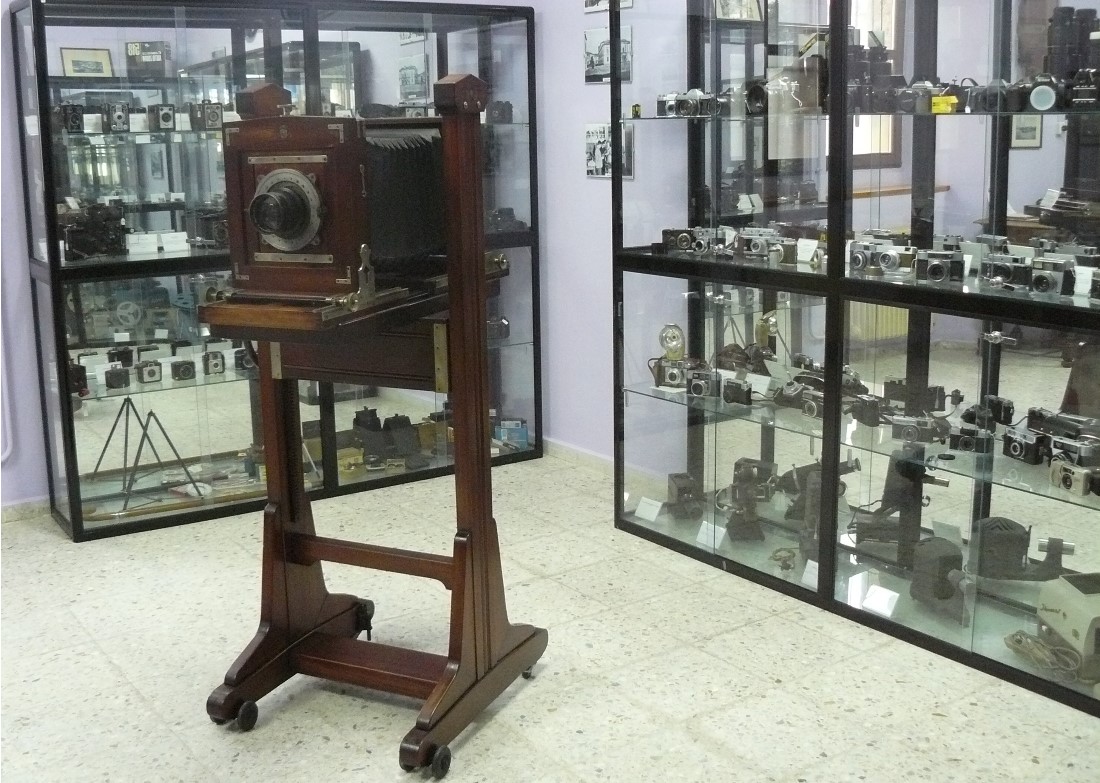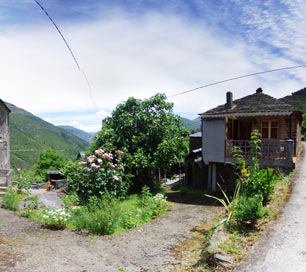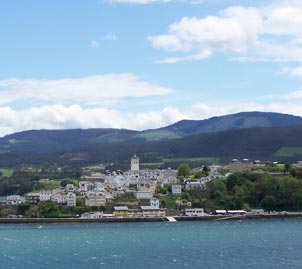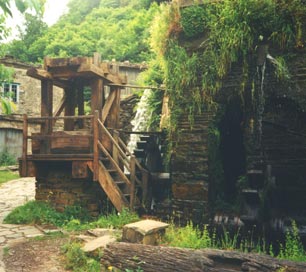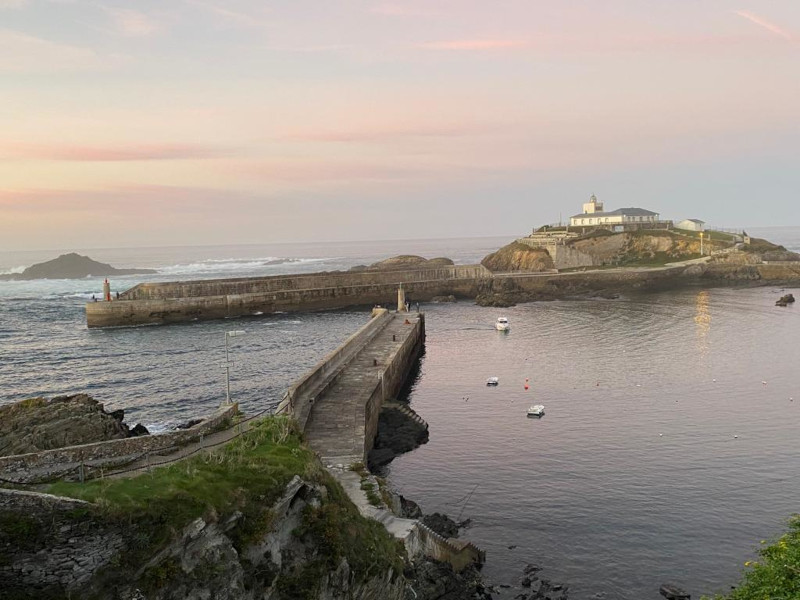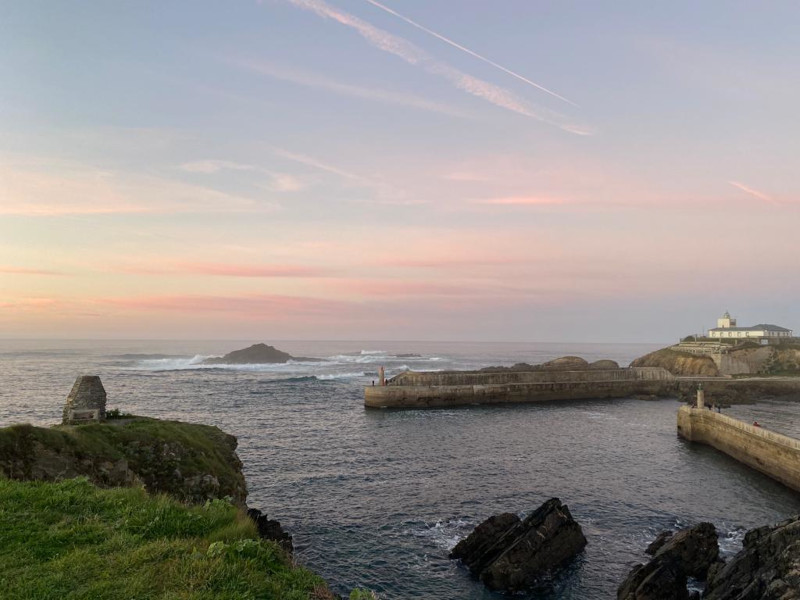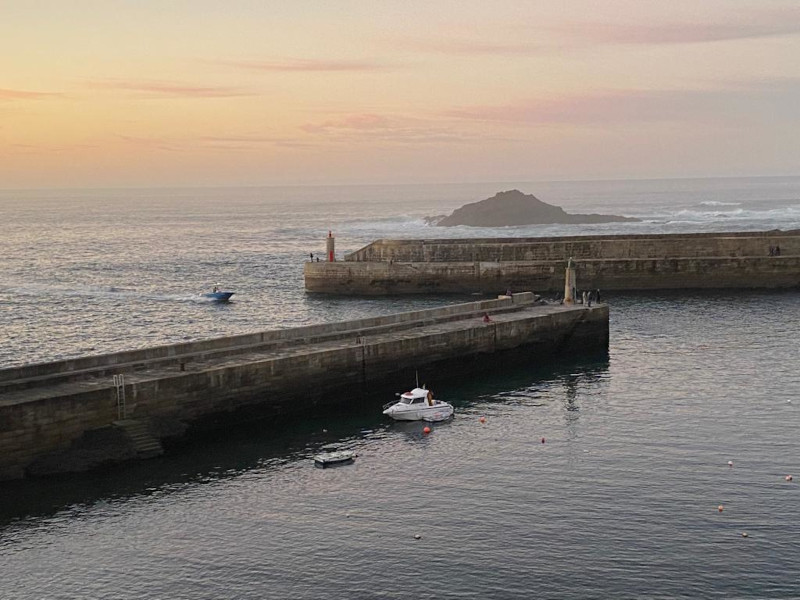Departure from the old Tapia laundry room – in the San Martín neighborhood -, a characteristic 20th-century construction with wood and slate for its roof and a moat around a wide channel for standing washing.
On the other side of the road we see the hostel for pilgrims and Dams, one of the most beautiful views that can be seen in Tapia. El Castro is also located in this place, located on the promontory to the west of the Ribeiro de Represas. This fort, also called “El Toxal”, is the origin of Tapia as a population center.
From the Represas viewpoint we will see the picturesque islets of A Pilara, Os Castelíos and Castelo Rapao.
We head in the direction of Salave, we walk 200 meters and at the end of the slope we turn off along the fisherman’s path towards the cliffs, where we can see the coast and the small coves, in this area there are several species of protected birds.
Arrived at the viewpoint of Cabo Cebes, we can make a short stop and contemplate the magnificent landscape that is presented to us, before resuming the route until we enter Mount Mirayos. Surrounded at all times by distinguished pines, we are led to the Campo Longo viewpoint, from which we can see the entrance to the port of Viavélez and a series of cliffs of unforgettable beauty.
We will descend along a path, where the trees cover the path, and we arrive at the Silva lagoons or mines, a mining space resulting from a montíum ruin, which occupies more than ten hectares of extension and which, with respect to the plain, enjoys depths that exceed the 20 meters.
Ruina montium: mining system used by the Romans and consisting of demolishing portions of the deposit using the pressure of water when penetrating through galleries for this purpose.
Some rocky hummocks stand out from a flooded bottom, populated by aquatic plants and bordered by riverside trees.
From the road you can see the mine entrances.
We go up a path flanked by trees and arrive at Cortaficio, we continue towards Balmorto where the remains of the monastery of San Acisclo and San Salvador, founded in the 10th century, are located. In the cove of El Figo there are some evidences of the defensive system of the castro Castreda, composed of two arched ditches on the eastern and southern flanks, and a water source that was formerly considered medicinal. Grain mills and Roman coins were found in this castreño settlement. A few meters further in the direction of Tapia, and always following the Camín Veyo, we find the Mántaras farmhouse and the San Antonio chapel, founded in 1660. After passing it, we will follow the Camino Real to reach the neighborhood of San Martín de Tapia, where one of the town’s churches stood until 1892.
At this point you can turn around and return along the same path until you reach Tapia.



